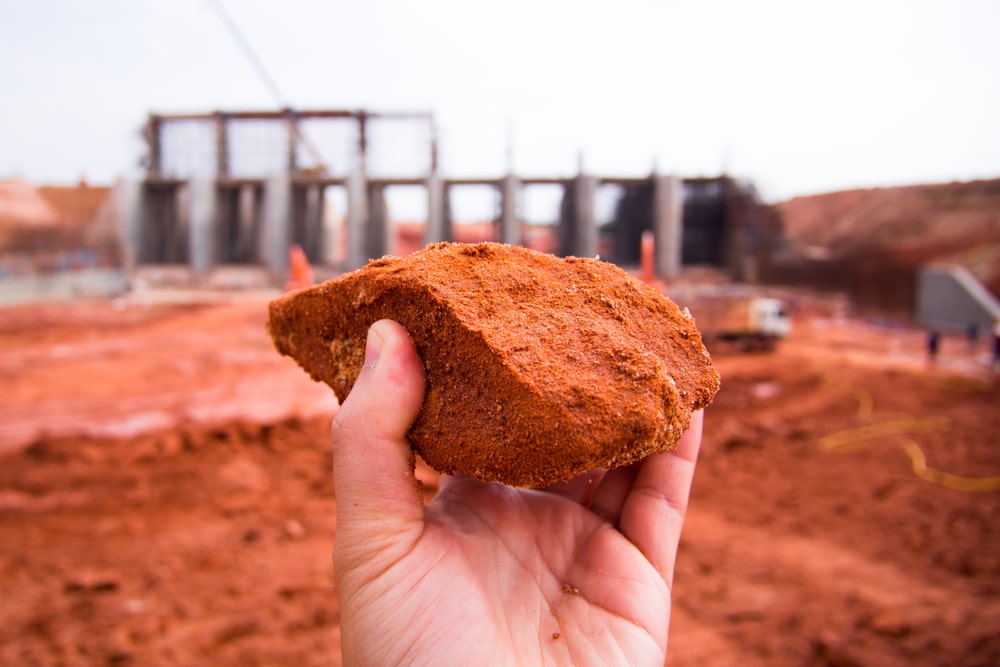The Buzz on Geotheta
The Buzz on Geotheta
Blog Article
Geotheta - An Overview
Table of ContentsThe 20-Second Trick For GeothetaThe Geotheta IdeasThe Greatest Guide To GeothetaThe Single Strategy To Use For GeothetaThe Buzz on Geotheta

They perform website investigations, gather examples, execute laboratory examinations, and assess data to examine the viability of the ground for construction jobs - Geo Tech Engineer. Based upon their findings, geotechnical designers supply suggestions for foundation design, slope security, keeping frameworks, and reduction of geotechnical threats. They collaborate with various other experts, such as architects, structural engineers, and building groups, to make sure that geotechnical factors to consider are incorporated right into the total task layout and execution
By assessing the behavior and buildings of dirt and rock, they can recognize possible geotechnical dangers such as landslides, dirt negotiation, or incline instability. Their proficiency helps prevent failures or accidents that can endanger lives and residential property. Right here are some in-depth tasks and obligations of a geotechnical engineer: Site Examination: Geotechnical designers conduct website investigations to collect data on subsurface conditions.
They translate the information to recognize the homes and actions of the dirt and rock, including their strength, permeability, compaction qualities, and groundwater conditions. Geotechnical Analysis and Style: Geotechnical engineers examine the information gathered during site investigations to evaluate the stability and suitability of the website for construction tasks. They perform geotechnical computations and modeling to examine aspects such as bearing ability, negotiation, slope security, lateral earth pressures, and groundwater flow.
An Unbiased View of Geotheta
Foundation Layout: Geotechnical designers play an important duty in designing structures that can securely support the designated framework. They evaluate the soil conditions and load needs to figure out the appropriate structure type, such as superficial structures (e.g., grounds), deep foundations (e.g (https://yoomark.com/content/httpsgeothetacom)., piles), or specialized methods like soil enhancement. They take into consideration factors such as settlement limits, birthing capability, and soil-structure communication to develop ideal structure layouts
They assess construction strategies, display site tasks, and conduct field assessments to verify that the design referrals are complied with. If unpredicted geotechnical issues develop, they examine the situation and provide suggestions for removal or changes to the layout. Threat Analysis and Reduction: Geotechnical engineers evaluate geotechnical dangers and risks related to the project site, such as landslides, liquefaction, or soil disintegration.

Collaboration and Interaction: Geotechnical designers function very closely with various other specialists associated with a task, such as engineers, structural designers, and construction groups. Reliable communication and partnership are vital to integrate geotechnical factors to consider right into the general task style and construction procedure. Geotechnical engineers provide technical expertise, solution questions, and ensure that geotechnical requirements are satisfied.
See This Report on Geotheta
Right here are some sorts of geotechnical engineers: Foundation Engineer: Foundation engineers focus on designing and evaluating structures for structures. They examine the soil problems, tons needs, and site qualities to figure out one of the most proper structure type and design, such as shallow foundations, deep structures, or specialized strategies like pile structures.
They assess the variables influencing incline security, such as soil buildings, groundwater conditions, and incline geometry, and create strategies to avoid slope failings and minimize threats. Quake Designer: Quake designers specialize in assessing and developing frameworks to withstand seismic pressures. They assess the seismic danger of a site, examine dirt liquefaction capacity, and create seismic style standards to ensure the security and durability of frameworks throughout earthquakes.
They carry out field testing, gather samples, and analyze the accumulated information to identify the soil residential properties, geologic formations, and groundwater problems at a website. Geotechnical Instrumentation Designer: Geotechnical instrumentation designers focus on tracking and gauging the habits of dirt, rock, and structures. They mount and keep instrumentation systems that keep an eye on aspects such as soil negotiation, groundwater degrees, slope movements, and architectural variations to evaluate efficiency and offer very early cautions of prospective issues.
Some Known Factual Statements About Geotheta
They carry out examinations such as triaxial tests, combination tests, direct shear examinations, and leaks in the structure tests to collect data for geotechnical evaluation and layout. Geosynthetics Engineer: Geosynthetics engineers focus on the style and application of geosynthetic products, such as geotextiles, geogrids, and geomembranes. They use these products to improve soil stability, enhance slopes, supply drain remedies, and control disintegration.
They have a tendency to be investigative people, which implies they're intellectual, reflective, and analytical. They wonder, systematic, rational, logical, and sensible. Several of them are also social, implying they're kind, generous, participating, individual, caring, useful, understanding, tactful, and friendly. Does this sound like you? Take our cost-free occupation examination to discover if geotechnical designer is among your top career suits.
In the workplace atmosphere, geotechnical designers use specialized software application tools to carry out computations, create check here designs, and assess information. They prepare records, evaluation job specs, interact with clients and employee, and coordinate job tasks. The office setting supplies a helpful setting for research, evaluation, and cooperation with various other specialists associated with the task.
The Ultimate Guide To Geotheta
They often check out job websites to carry out site examinations, examine geotechnical problems, and collect data for evaluation. These brows through include taking a trip to various areas, occasionally in remote or tough terrains. Geotechnical engineers might do soil tasting, conduct tests, and screen construction activities to guarantee that the geotechnical aspects of the task are being applied properly.
Geotechnical designers likewise work in specialized geotechnical research laboratories. In these centers, they conduct experiments, execute examinations on dirt and rock examples, and examine the engineering residential or commercial properties of the products. Geotechnical research laboratory designers work extensively in these atmospheres, managing screening tools, operating tools, and tape-recording information. They work together with various other research laboratory team to guarantee exact and reputable testing outcomes.
Report this page